Three
PROCESS
The transition from high school to US Coast Guard commissioned officer is a complicated one, covering 200 weeks. It involves classroom studies and requires physical, intellectual, and professional values. Graduates must be capable of defending the nation and enforcing federal laws. The end result is the shaping of many diverse young men and women into a cohesive class with ties for a lifetime. The process is spread over four years, with the fourth class, or freshman, as follower. The sophomore, or third class, is the role model, with the second class, or junior, largely responsible for the hands-on shaping and operating of the corps. The seniors, or first class, are the overall leaders, setting and enforcing the mission. The Guide to Officer & Leader Development (GOLD) envisions a support team made up of an academic advisor, company officer/chief, port/activity coach, and mentors to produce leaders of character.
A portion of this evolution will be examined using two classes, the class that entered the academy in 1959 and the class that graduated in 2019. The period of 60 years between the two classes covers many changes in the academy that reflected priorities in society and the challenges the academy faces. During this period, the Coast Guard shifted from the Treasury Department to the Transportation Department and, finally, to the Department of Homeland Security. The makeup of the academy went from an all-male, nearly all-white corps of cadets to a diverse corps, one-third of which was female, with the highest percentage of underrepresented minorities of any military academy. The courses available to cadets expanded from a single track with only one major to multiple choices and nine different majors.
There have been significant improvements in selection using volunteer admission partners and a strong Academy Introductory Mission (AIM). The class that entered in 1959, with 181 taking the oath, commissioned 92, for an attrition rate of 50 percent. That class had only one underrepresented minority member—a Japanese American from Hawaii. The class of 2019 had 287 sworn in and graduated 240, for an attrition rate of 16 percent. That class had 101 females, 24 Asian Americans, 16 African Americans, and 13 people of Hispanic origin. The class of 1963 had graduates from 25 states and the District of Columbia. The class of 2019 contained graduates from 42 states and Washington, DC.
The military system remained in place for both of these classes. The first year is known as swab year. Swabs are required to follow rigid procedures when they are outside of their rooms. They have to be at attention with “eyes in the boat,” meaning looking straight ahead. They stay in the center of all corridors, and all corners are “squared” (meaning that swabs must make a 90-degree turn). While going up and down “ladders” (stairs), swabs are to stay on the outside and square corners. When swabs are outside the academy buildings, they are required to march in formation. At meals, they sit on the forward three inches of their chairs, eyes in the boat, eating square meals and only speaking when addressed by an upperclassman. There is indoctrination information to be memorized for each day, and swabs are required to have a joke when asked. The swab year is a long year.
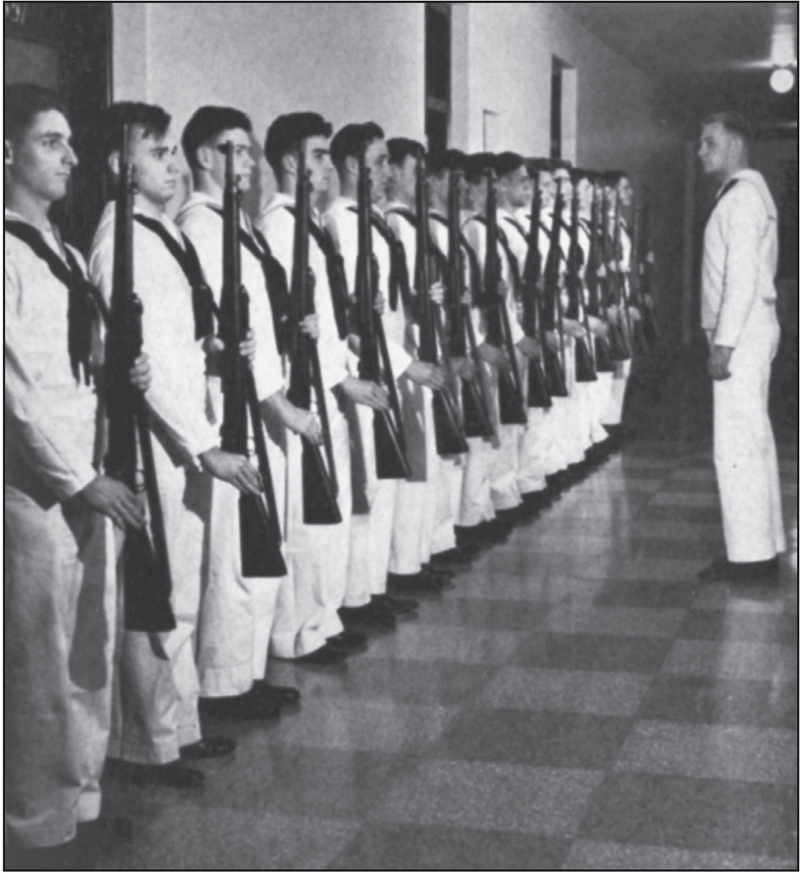
CADET SWABS OUT WITH RIFLES. Since the Coast Guard is a branch of the military, weapons training is required, although actual shooting is done during second-class summer (unless a cadet is on a rifle or pistol team). Today, training is done on M-16, 9-millimeter pistol, and shotgun. In 1961, the class of 1963 did small-arms training with the Marines at Quantico using M-1s and .45-caliber pistols. The Marine Corps and the Coast Guard have a close relationship that dates back to World War II, when Coast Guard coxswains manned the landing craft that put Marines on hostile shores. (1941 Tide Rips.)
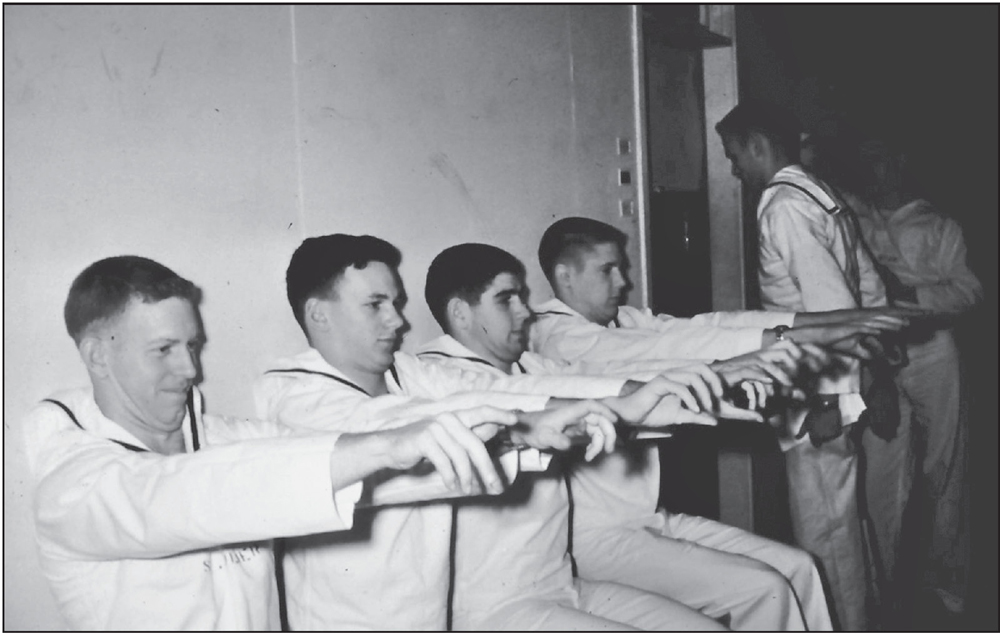
SWABS IN THE “GREEN BENCH.” A particularly unpopular procedure was the green bench, so named for the sweat stain one left on the bulkhead. The swab year is monitored to avoid activities of a hazing nature that could be injurious. Behavior that has a racial or sexual element is strictly prohibited. (Courtesy of Steve Ulmer.)
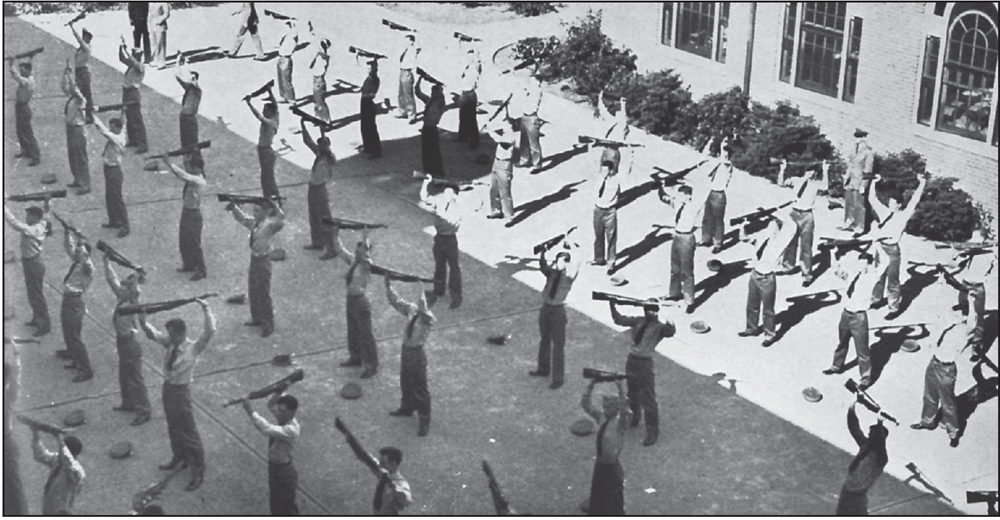
CADETS IN QUADRANGLE. These cadets are doing exercises with the M-1 rifle. “Butts and Muzzles” is hard work but teaches military skills. The M-1 weighed just under 10 pounds, and it required considerable arm strength and endurance to do this exercise for any length of time. (1947 Tide Rips.)
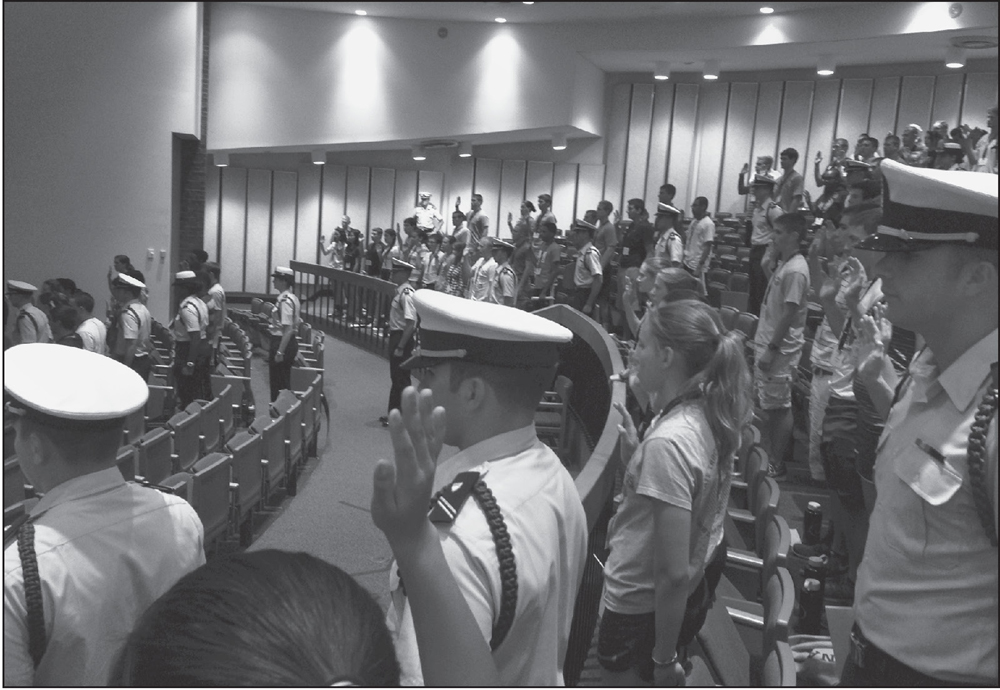
ACADEMY INTRODUCTORY MISSION (AIM) OATH. The AIM program, which began in 1966, is an improvement to the selection process. Here, prospective cadets between their junior and senior years of high school attend a week of extensive training at the academy. The successful completion of AIM is a good indicator of future success at the academy. The rising members of the class of 2019 included 37 percent who were AIM graduates. There was no AIM program in place for the class of 1963. (Author’s collection.)
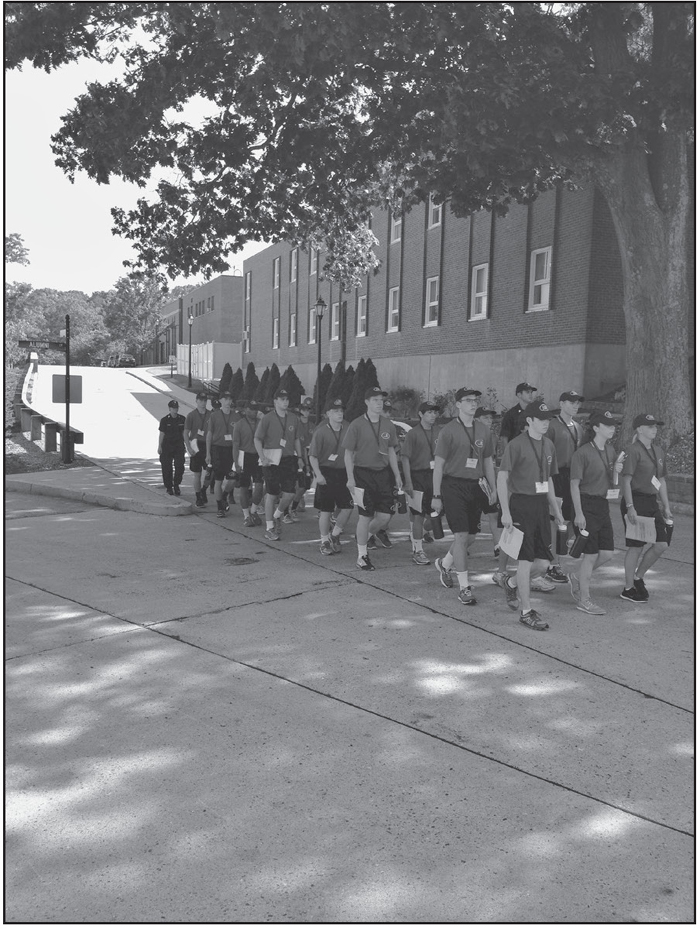
ACADEMY INTRODUCTORY MISSION (AIM) PARTICIPANTS MARCHING. Participants learn the basics of military discipline over a one-week period. The program is realistic and gives the prospective cadets a feel for swab year. Approximately 300 high school students participate in AIM during the summer before their senior year, and the academy offers three weeklong sessions. (Author’s collection.)
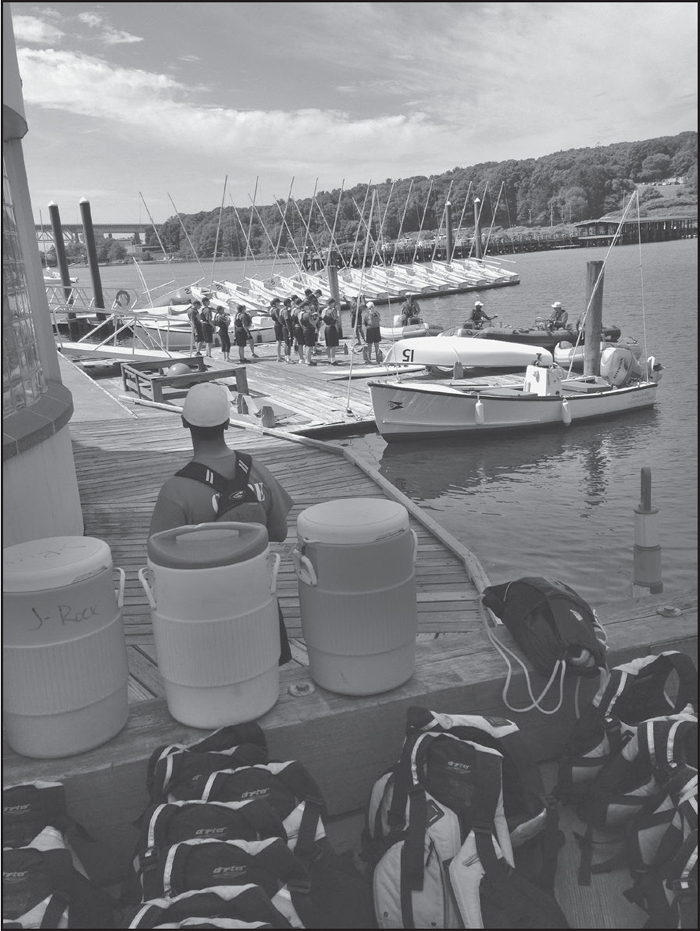
ACADEMY INTRODUCTORY MISSION (AIM) PARTICIPANTS AT THE WATERFRONT. Here, AIMers enjoy waterfront fun as they try their hands at sailing at Jacobs Rock. Those who successfully complete the AIM week are much more likely to adapt to life at the academy, which has helped to reduce the attrition rate. In the case of the class of 1963, the rate of attrition was over 50 percent. (Author’s collection.)
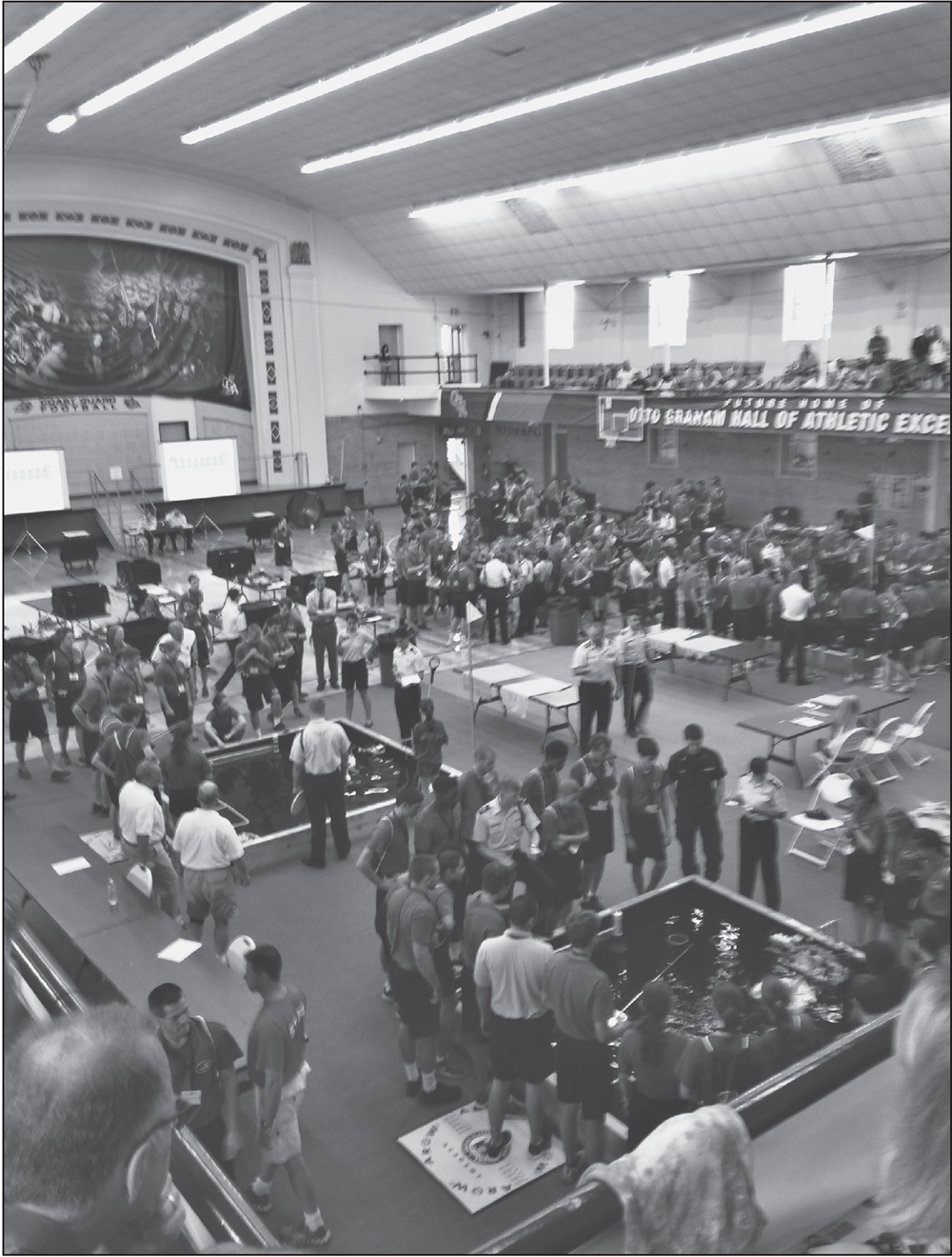
ACADEMY INTRODUCTORY MISSION (AIM) COMPETITION. Teams demonstrate their teamwork by constructing and operating a radio-controlled boat to accomplish a number of Coast Guard missions, including placing a buoy, rescuing survivors from the water, ice-breaking, cleaning up pollution, and others. It is truly amazing how this diverse group of high school juniors develops into cohesive teams in such a short time. (Author’s collection.)
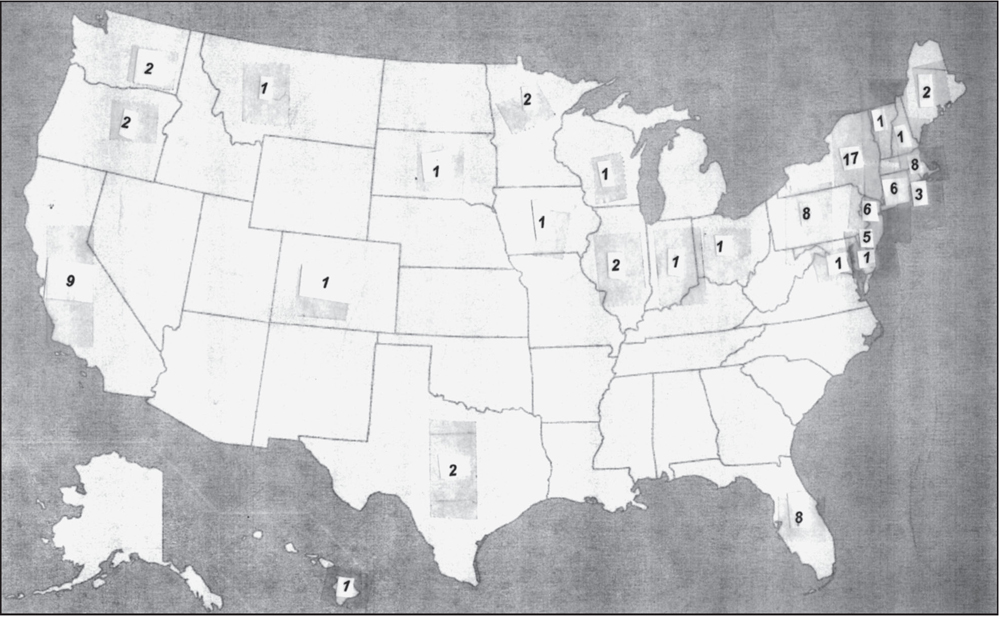
MAP OF 1963 GRADUATES. This map made by the author shows the home states of the graduates of the US Coast Guard Academy class of 1963. Northeastern states provided 46 of the 93 graduates. Only Florida, with 8 graduates, represented the Southeast. Fourteen members came from the West, and nine came from the Great Lakes. New York was the source of the most graduates—17. Twenty-two states had no graduates in the class of 1963. (Author’s collection.)
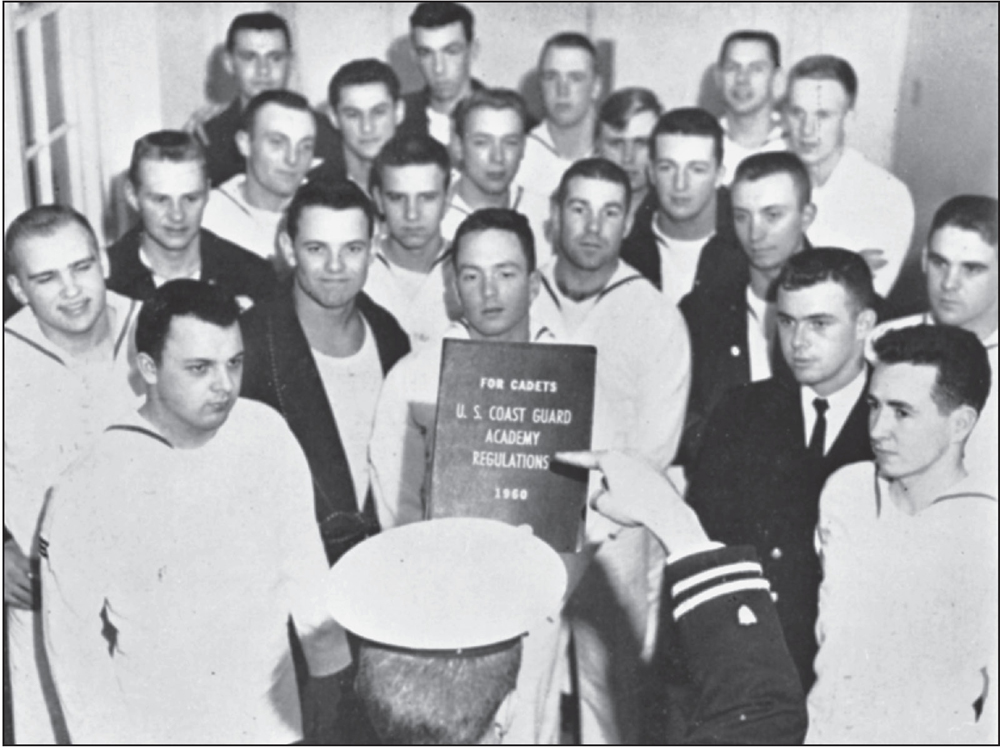
THE ACADEMY REGULATIONS. These were the laws cadets lived by. Infractions led to demerits and determined how much liberty a cadet could have. More than 25 demerits in a month meant no liberty the following month. Demerits also factored into class standing. (1961 Tide Rips.)
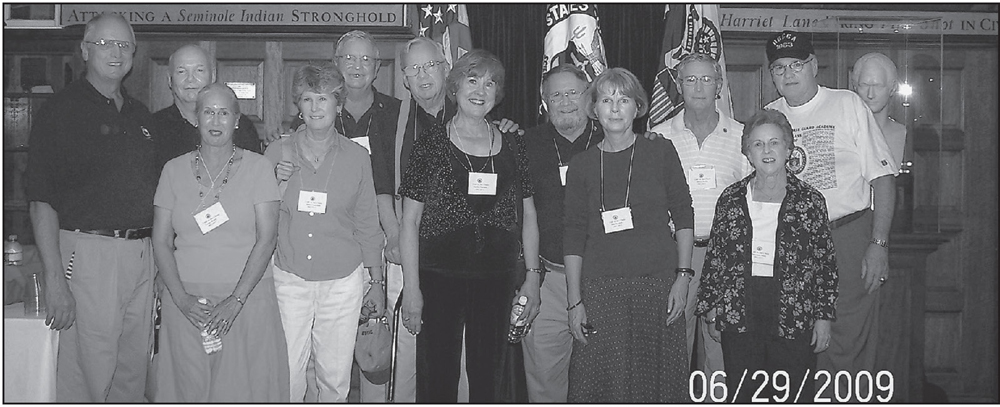
CHAIN GANG. An innovation that started with the class of 2011 was linking the inbound class with the class that would have its 50th anniversary during the year of that class’s graduation. The members of the class of 1963 and their spouses assembled for the reporting-in day of the class of 2013. Throughout the four years of the class of 2013, members of the class of 1963 would attend their special events. It was especially helpful for the parents of the incoming class to have some reassurance at reporting-in day that their sons and daughters were joining a special group—known as the Long Blue Line—that would care for them. (Author’s collection.)
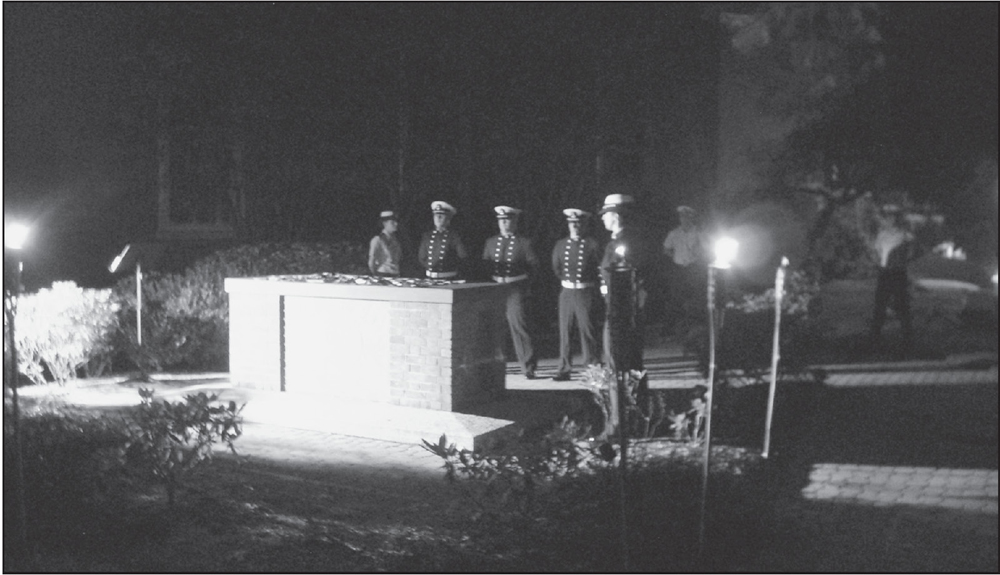
THE HONOR WALK. At the end of their seven-week Swab Summer, the members of the class of 2013 were taken on a special event called the Honor Walk. Led by the second-class cadets, the walk is held in the evening in the Robert Crown Park adjacent to the Memorial Chapel. Members of the fourth class are led through a series of dramas played in costume by second-class cadets depicting events in Coast Guard history. The event ends at the tomb of Hopley Yeaton, the first commissioned officer of the Revenue Cutter Service. (Author’s collection.)
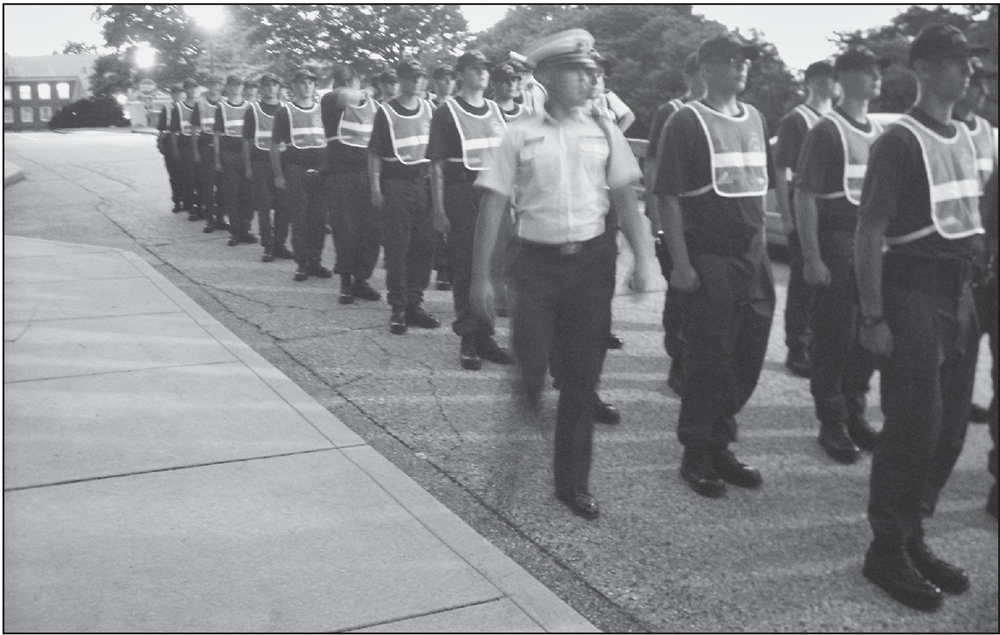
CLASS OF 2013 ARRIVING AT CROWN PARK FOR THE HONOR WALK. King Neptune led the group. The atmosphere of the Robert Crown Park at dusk provides a dramatic setting for the events that are presented in the hour-long process. (Author’s collection.)
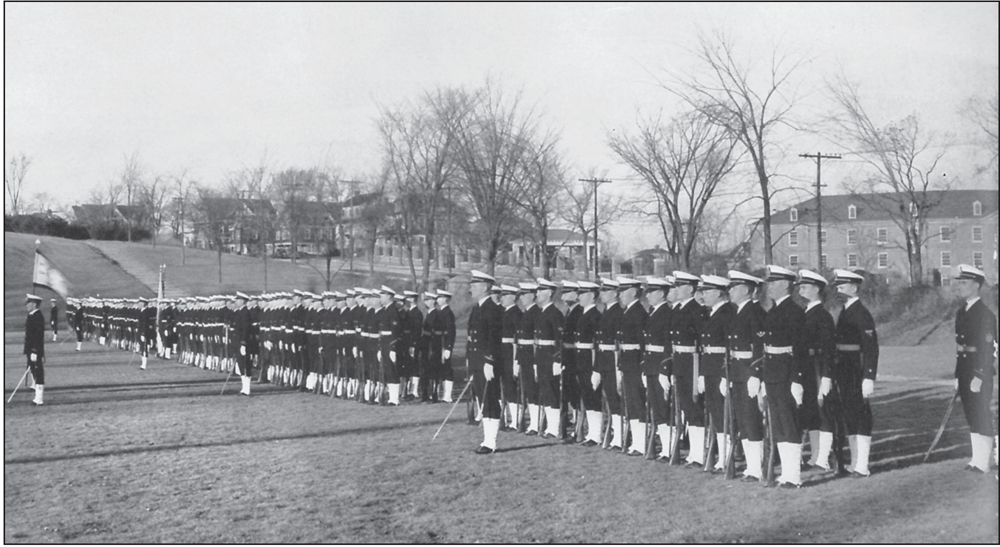
THE 1940 CORPS. Cadets stand proudly in formation in the early days at the New London campus. The modern cadets are organized as one regiment divided into eight companies, each of which is composed of about 120 cadets of all classes. The highest-ranking cadet in each company is the company commander. At the top of the cadet chain of command is the regimental commander, the highest-ranking cadet. Command positions, both in companies and on regimental staff, are highly competitive, and a cadet’s overall class rank is often a deciding factor in who is awarded the position. The eight companies are named for the first eight letters of the NATO phonetic alphabet. Each has a special focus in the administration of day-to-day affairs. Alpha Company manages health and wellness. Bravo Company runs training. Charlie Company administers the honor system. Delta Company coordinates drills and ceremonies. Echo Company manages transportation and logistics. Foxtrot Company operates the cadet conduct system, organizes the watch rotations, and updates cadet regulations. Golf Company is in charge of cleaning supplies and repairing damaged rooms within Chase Hall. Hotel Company is in charge of morale events. To accomplish these missions, each company is divided, along shipboard lines, into three departments, each of which is divided into divisions with specific responsibilities. Divisions are the most basic unit at the Coast Guard Academy, and each has a very specific purpose. Each division is led by a first-class cadet and contains several members of each other class. (1940 Tide Rips.)
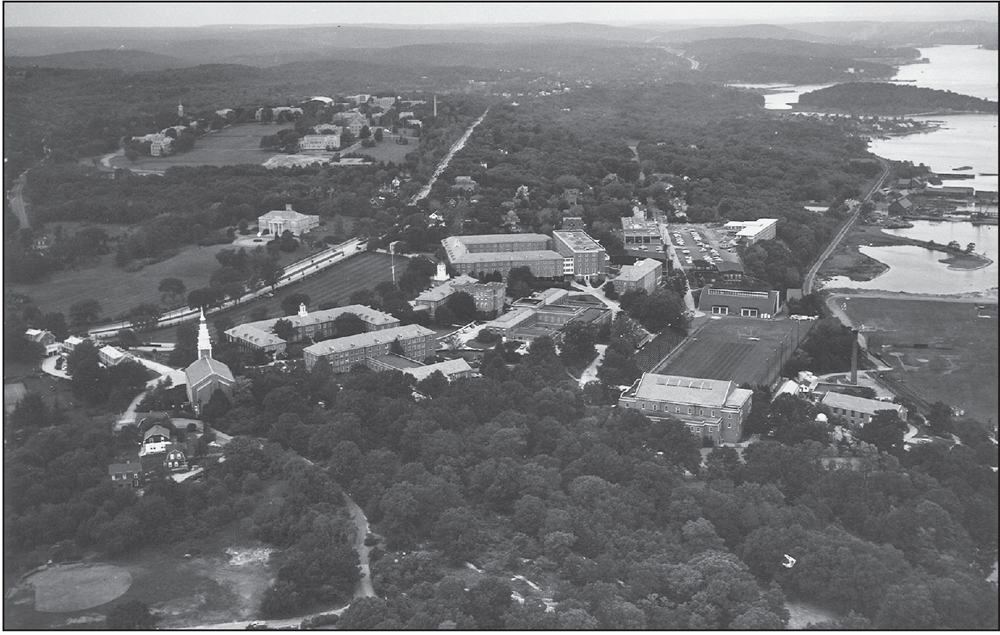
AERIAL VIEW OF THE COAST GUARD ACADEMY. The academy campus and surroundings are captured in this picture. The campus encompasses over 100 acres both purchased and donated by the City of New London. Jean Hamlet, daughter of academy superintendent Rear Adm. Harry G. Hamlet, broke ground on the campus in January 1931. The cornerstone for Hamilton Hall was laid by Secretary of the Treasury Andrew W. Mellon in May 1931. (Courtesy of Coast Guard Academy Facilities Engineering.)
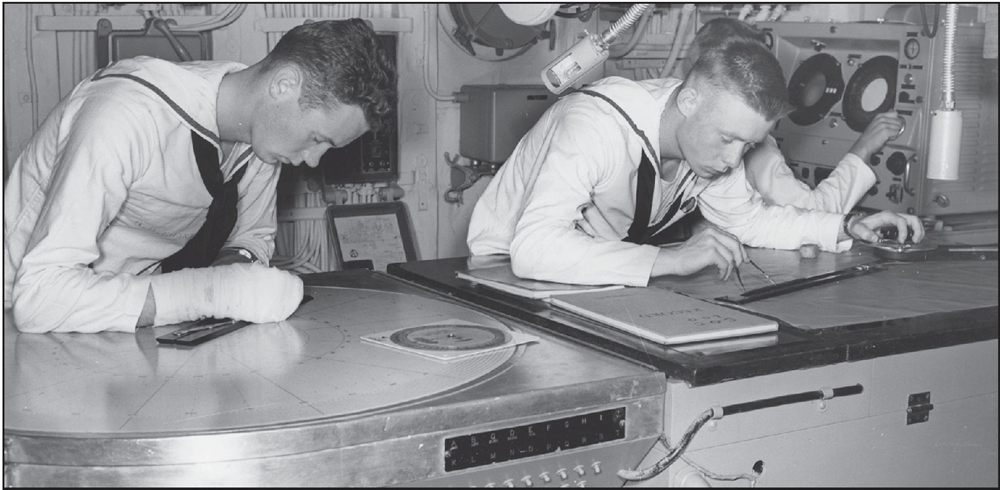
COMBAT INFORMATION CENTER (CIC). Cadets work in a CIC on a summerlong cruise. For all classes, the summerlong cruises on the Eagle are significant events during training. The long cruise for the class of 1963, held at the start of third-class year in 1960, went from New London to Portsmouth, England; Oslo, Norway; and Le Havre, France. Cadets sailed on the Eagle, with the cutters Absecon and Yakutat making up the squadron. In 1962, at the start of the cadets’ first-class year, the cruise went from the academy to Edinburgh, Scotland; Antwerp, Belgium; and Las Palmas, Spain. (1963 Tide Rips.)
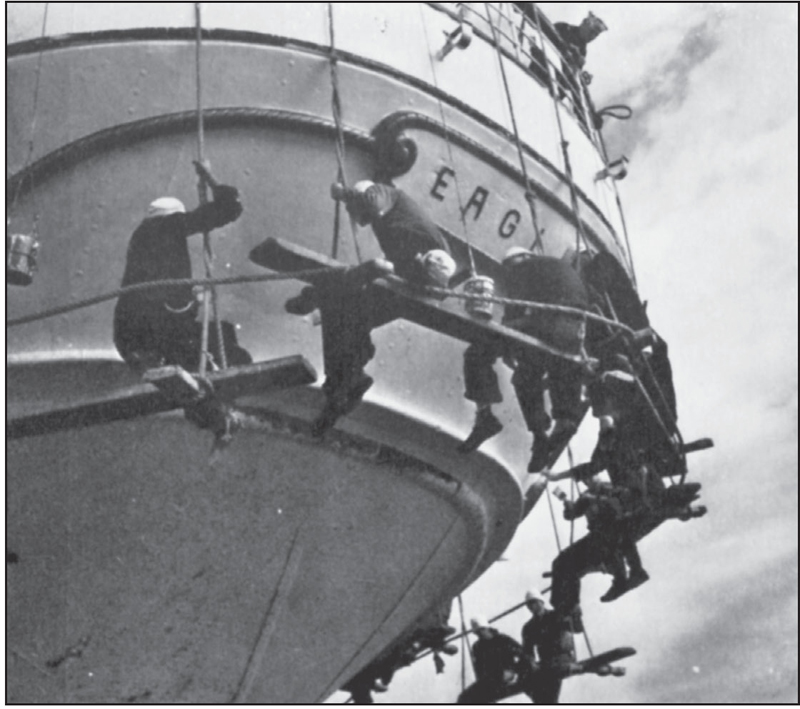
WORKING ON THE EAGLE’S STERN. Cruising on the Eagle and the accompanying cutters is not all fun and games. The Eagle is over 80 years old and requires daily maintenance of her wooden decks and paint to protect her from the maritime environment. (1950 Tide Rips.)
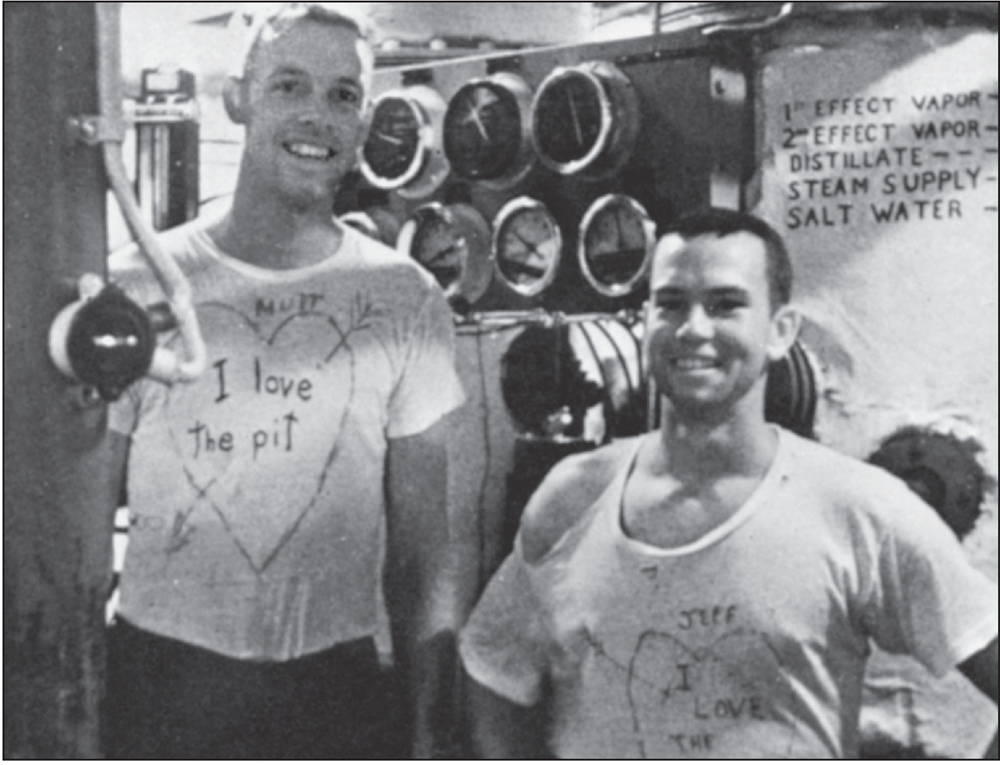
ON WATCH. The Eagle has an engine room where cadets stand evaporator watch. These members of the class of 1963 are Jim Webster (left), who later became an aviator and aviation-engineering officer, and Joe Hughes, who was tragically killed in an automobile accident en route to his first duty station. (1963 Tide Rips.)
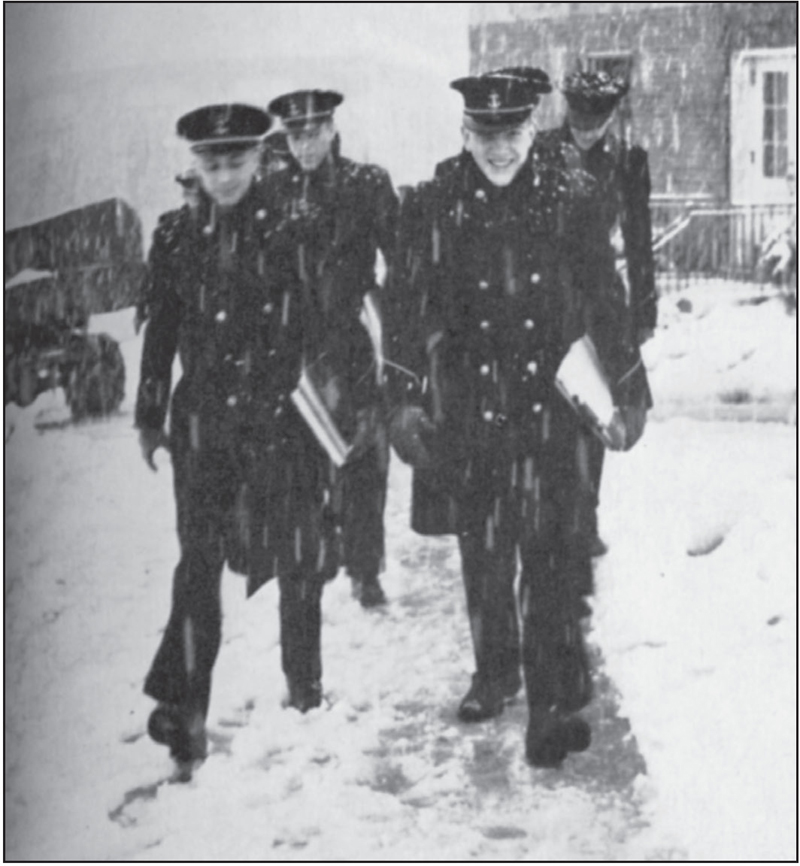
CONNECTICUT WINTER. The New London weather is not always friendly, especially for cadets from Florida and California. Winters in New London are cold. Fortunately for the class of 1963, they never went through a hurricane during their four years at the academy. (1954 Tide Rips.)
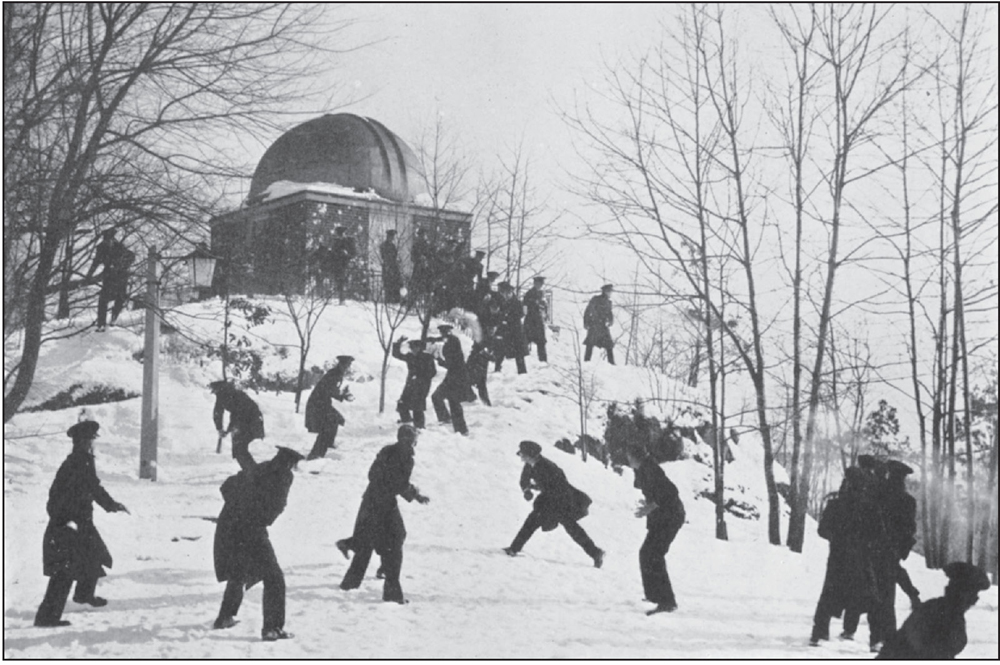
SNOWBALL FIGHT. The secret to New England weather is to enjoy what one gets. This image shows a snowball fight by the observatory. The long topcoat, known as a bridge coat, was a welcome piece of apparel in the cadet wardrobe. Unfortunately, the combination hat was not designed for warmth. (1951 Tide Rips.)
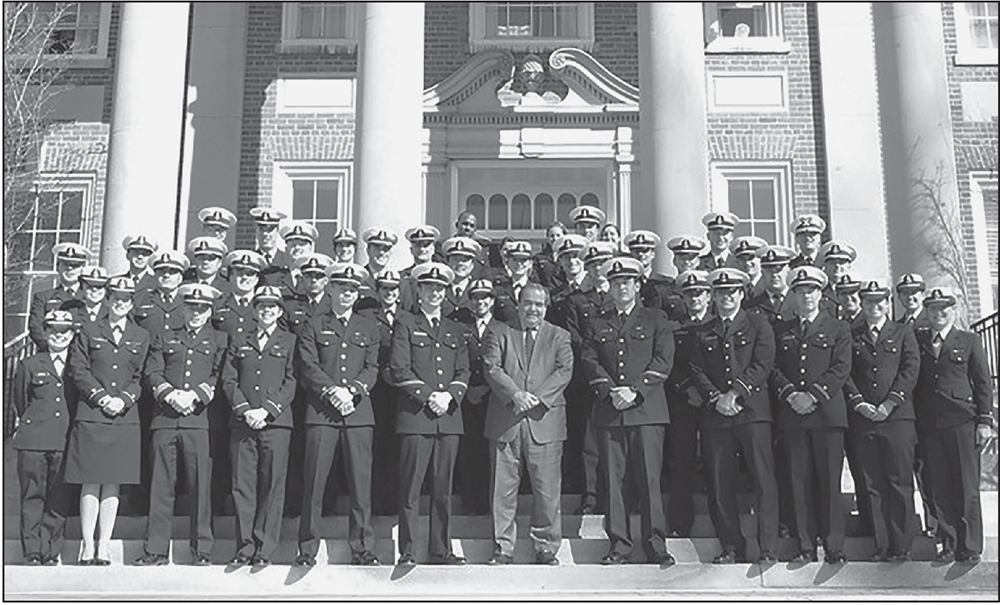
SUPREME COURT JUSTICE ANTONIN SCALIA VISITS THE ACADEMY. Justice Scalia was appointed by Pres. Ronald Reagan and served from 1986 until his death in 2016. Throughout the cadets’ 200 weeks at the academy, distinguished leaders from the government and the military are invited to make a visit to address cadets. Often, a review is held in their honor. (Courtesy of US Coast Guard Academy petty officer third class Cory Mendenhall.)
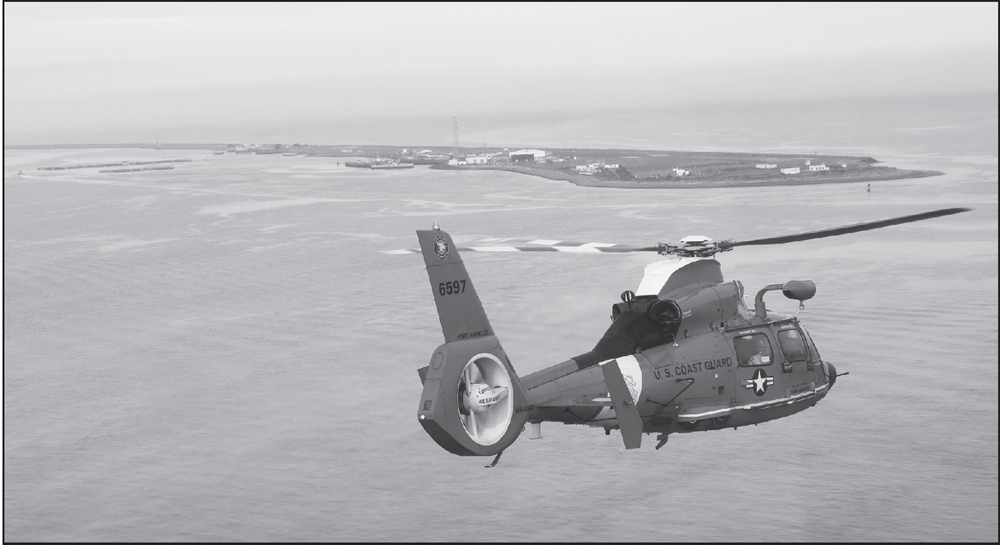
HH-65 HELICOPTER. The summer program at the start of second-class year includes an introduction to Coast Guard Aviation known as Cadet Aviation Training Unit (CATU). For the class of 1963, CATU was held at Elizabeth City Air Station in North Carolina. Later classes did CATU at the Aviation Training Center in Mobile, Alabama. Beginning in 1984, flights at CATU in Mobile were made in the then-new HH-65A. The HH-65 replaced the HH-52A Sikorsky helicopter, which saved more lives than any other helicopter. The 99 HH-52s flown by the Coast Guard are now retired. (Author’s collection.)
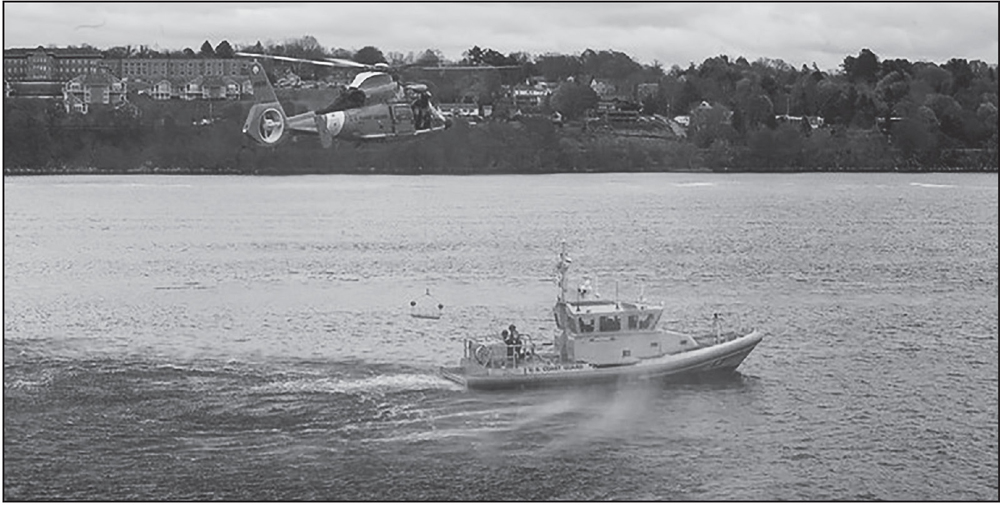
HOIST TRAINING. Approximately 10 to 20 percent of each class will attend flight training in Pensacola, Florida, and Corpus Christi, Texas, with the US Navy. Additional obligated service is required for those who attend postgraduate training such as flight training. The Coast Guard has a higher percentage of aviators in the officer ranks than any other service. Here, an HH-65 practices a boat hoist with a Coast Guard small boat from Station New London. (Courtesy of Coast Guard Academy Public Affairs, Zach Kayser.)
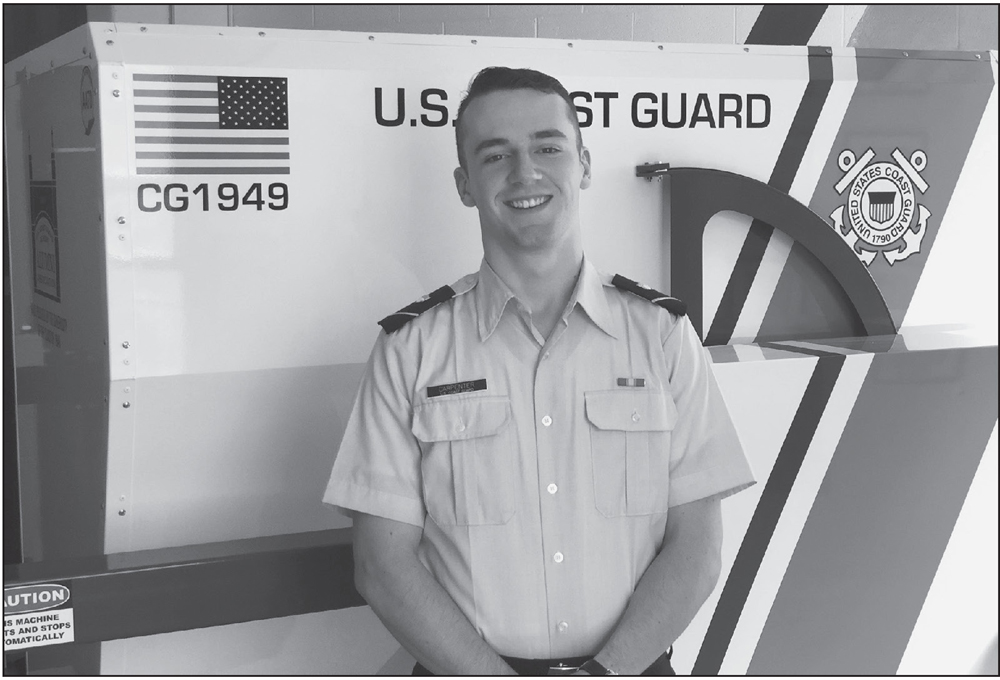
RED BIRD AVIATION SIMULATOR. Simulator administrator cadet third class Jackson Carpenter stands in front of the Red Bird Aviation Simulator in Chase Hall. The $105,000 simulator was a gift from the class of 1949 and the alumni association. It has significantly added to the aviation experience opportunity for cadets. (Courtesy of the US Coast Guard Academy Alumni Association.)
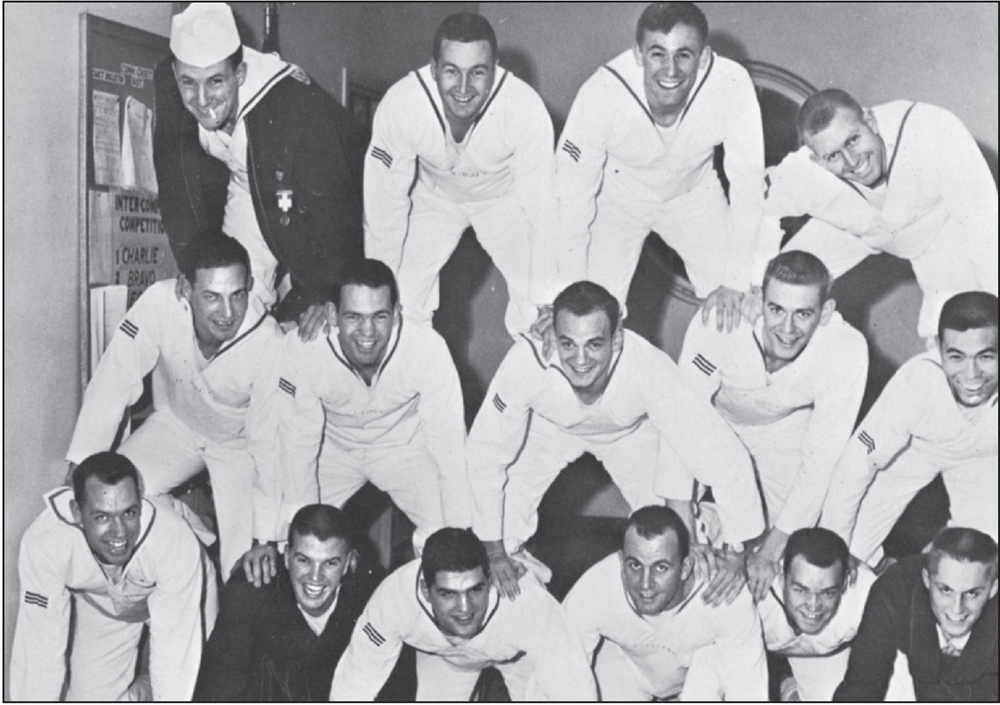
HUMAN PYRAMID. The process has its high points in first-class year. Here, the leaders of Foxtrot Company enjoy some time together. Of note are the three on the far left of the bottom row—from left to right, Jim Webster, Gerry Woolever, and Dave Zwick—who graduated as the top three members of the class of 1963. Harry Suzuki (farthest right in the second row) was the single Asian American and minority in the class. (1963 Tide Rips.)
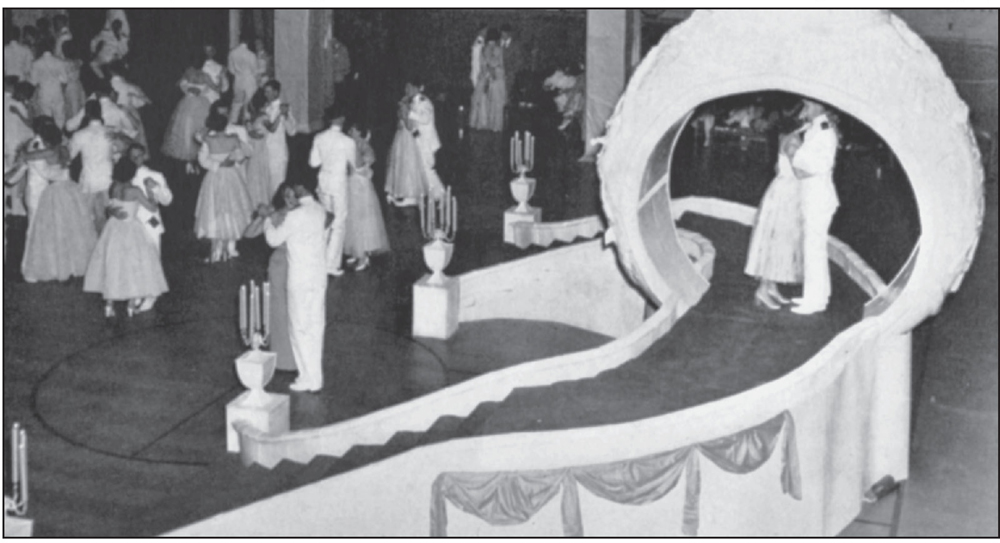
RING DANCE. A traditional highlight is the Ring Dance, held at the end of second-class year before the long cruise. This is when many of the class become engaged, often giving their intended the miniature ring worn throughout second-class year as an engagement ring. Cadets are required to attend at least two formal dances each year. (1954 Tide Rips.)
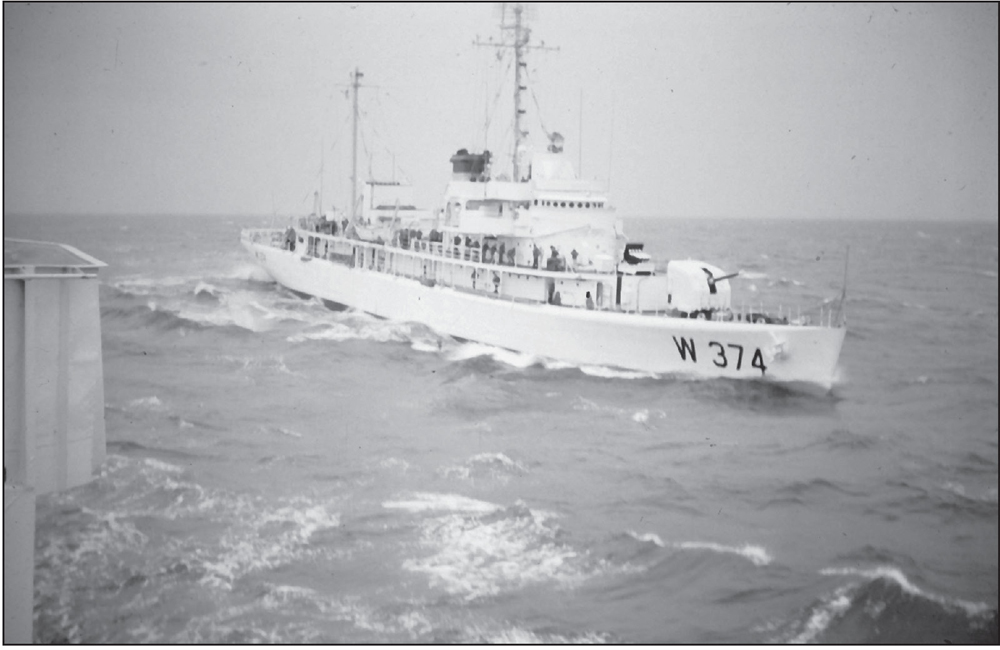
USCGC ABSECON (WAVP-374). The long cruise usually lasts for 10 weeks. Cadets split their time between the Eagle and the two accompanying high-endurance cutters. It is a time to take many star fixes with the sextant and use the theory learned in the classroom. The liberty in European and other ports is definitely a plus. Note the absence of the distinctive red and blue “speed stripe” found on modern Coast Guard cutters. (1963 Tide Rips.)
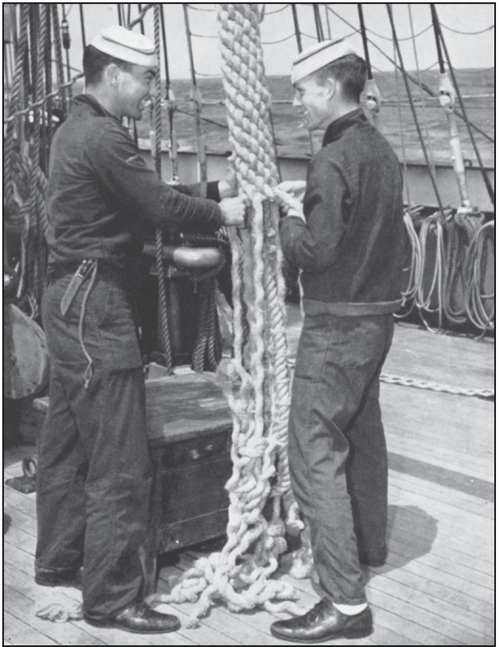
ROPE WORK. Time aboard the Eagle gives cadets an opportunity to experience the traditions of life aboard ships in the days of sail. It teaches an appreciation for the importance of paying attention to the weather and the hard work required to keep the ship and its rigging in shape. The author, who came from the desert region of Washington State, had his only seagoing experience on the Columbia River prior to his time in the Coast Guard. Climbing the rigging on the high seas was a meaningful indoctrination into these traditions. (1954 Tide Rips.)
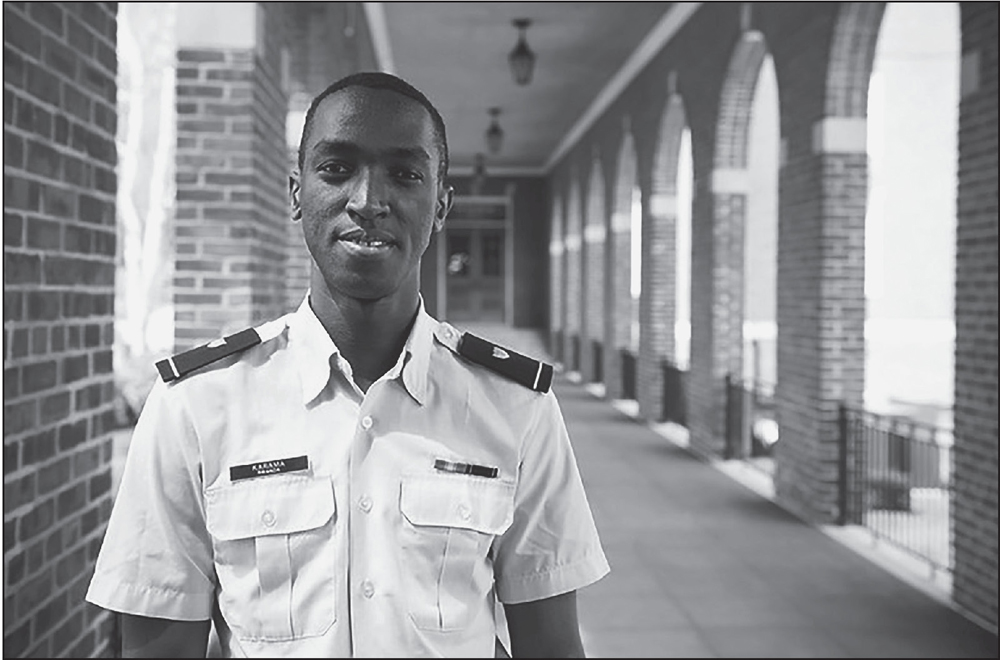
CADET FIRST CLASS JACKSON KALAMA. Kalama, shown here in 2016, was a foreign exchange student from Rwanda. Up to 36 members of the US Coast Guard Academy can be foreign exchange students. The program fosters universal understanding between different countries. Strong lifetime bonds develop between class members. (Courtesy of US Coast Guard Academy Public Affairs.)
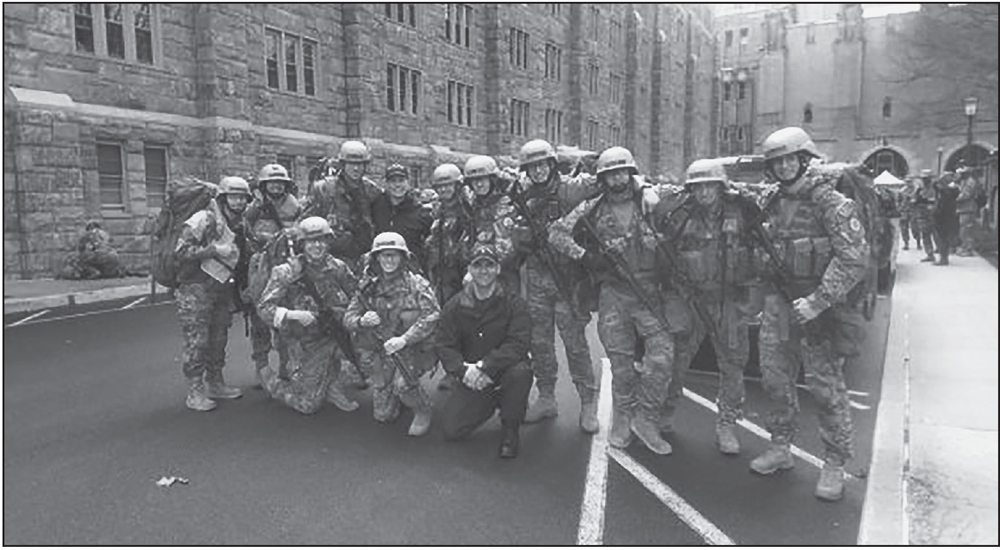
SANDHURST TEAM, 2017. The Coast Guard Academy team has competed in the Sandhurst competition at the Military Academy at West Point. Sandhurst is the world’s premier international military skills competition. It consists of a two-day course involving 13 day and night events. In the 2017 competition, the US Coast Guard Academy team defeated 29 of 38 West Point teams and the Naval Academy team. (Courtesy of Paul Duddy.)
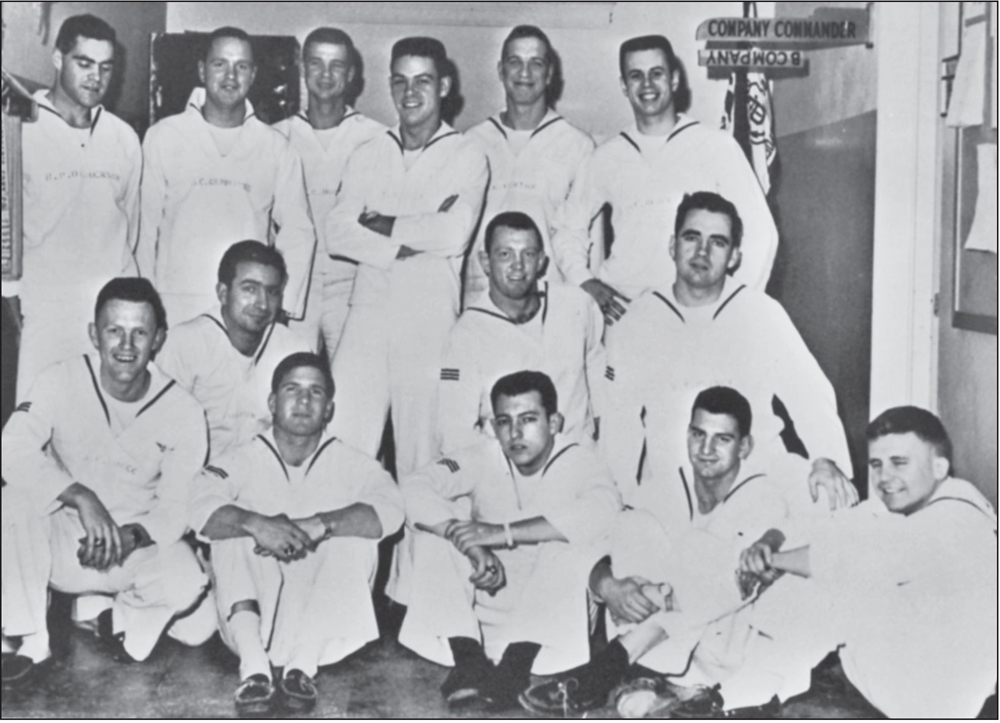
CLASS OF 1963 BRAVO COMPANY. The four-class system of learners, watchers, trainers, and leaders has its desired result of creating close bonds among its members. Members of the group have to help one another to successfully meet their challenges. These bonds remain throughout the members’ active duty careers and into the remainder of their civilian careers and retirement. (1963 Tide Rips.)





























